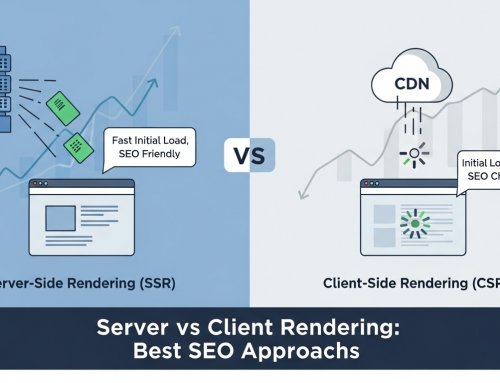Are you finding it difficult to climb the ranks in Google’s search results? Watching your competitors consistently outperform you can be frustrating, especially when you know that your products or services are just as good, if not better. The challenge of increasing your website’s visibility on Google can feel overwhelming, with countless factors to consider and ever-evolving algorithms to keep up with. Yet, without a solid strategy in place, your website might remain buried in the depths of search results, costing you valuable traffic, leads, and ultimately, revenue.
But there’s good news: optimizing your SEO for better Google rankings isn’t just for the big players or SEO experts. By understanding and applying a few key secrets, you can improve your website’s performance, attract more visitors, and stay ahead of your competition. This blog post will delve into the essential strategies that can make a significant difference in your rankings, from on-page and off-page techniques to the technical elements that often go overlooked. Let’s explore these Google ranking secrets so you can start seeing real results and elevate your online presence.
What is Google Ranking?
Google Ranking refers to the position your website occupies in Google’s search engine results pages (SERPs) for specific keywords or queries. When someone types a question or phrase into Google, the search engine uses a complex algorithm to determine which pages are most relevant and useful for that query. These pages are then ranked, with the most relevant ones appearing at the top of the search results. The higher your website ranks, the more likely it is to be clicked on by users, which can lead to increased traffic, brand visibility, and potential conversions.
Understanding Google’s ranking process involves grasping the key factors that influence how your website is perceived by the algorithm. These factors include content relevance, the quality and quantity of backlinks, user experience, mobile-friendliness, and more. Google constantly updates its algorithm to improve the accuracy of its rankings, making it essential for website owners to stay informed about these changes. Ranking well on Google is crucial because the majority of online experiences begin with a search engine, and most users tend to click on one of the top few results. Therefore, optimizing your site to meet Google’s criteria is a vital part of any successful online strategy.
On-Page SEO Strategies for Better Google Ranking
On-page SEO is crucial for enhancing your site’s visibility and performance in search engine results. By optimizing various elements on your website, you can improve your chances of ranking higher in Google. Here’s a look at some effective on-page SEO strategies:
Keyword Research and Optimization
Keyword research is the foundation of on-page SEO. Identifying the right keywords to target helps ensure that your content aligns with what users are searching for. Start by researching keywords that are relevant to your niche, using tools like Google Keyword Planner, SEMrush, or Ahrefs. Focus on a mix of short-tail and long-tail keywords to capture a range of search queries.
Once you’ve identified your target keywords, incorporate them naturally into your content. Use primary keywords in key positions such as the title, headings, and the first 100 words of your content. Avoid keyword stuffing, which can harm readability and may lead to penalties. Instead, use variations and related terms to maintain a natural flow and enhance relevance.
Content Quality and Relevance
Content quality and relevance are critical for engaging users and satisfying search engine algorithms. High-quality content should be informative, well-researched, and tailored to your audience’s needs. Aim to provide comprehensive answers to user queries and address relevant topics in depth.
Ensure that your content is original and offers unique insights or solutions. Google rewards content that demonstrates expertise, authority, and trustworthiness. Regularly updating your content to reflect the latest information and trends can also help maintain its relevance and ranking.
Meta Tags and Descriptions
Meta tags, including title tags and meta descriptions, play a significant role in on-page SEO. Title tags should accurately reflect the content of your page and include your target keywords. They appear as the clickable headline in search results, so make them compelling to encourage clicks.
Meta descriptions, while not a direct ranking factor, influence click-through rates. A well-crafted meta description should provide a concise summary of your content and include relevant keywords. Aim for a length of 150-160 characters to ensure it displays properly in search results and entices users to click through to your page.
Internal Linking Structure
Internal linking helps search engines understand the structure of your site and the relationship between pages. By linking to relevant internal pages, you can distribute link equity throughout your site, improving the authority of individual pages and helping users navigate your content more effectively.
Use descriptive anchor text for your internal links, incorporating relevant keywords where appropriate. This practice not only enhances SEO but also provides a better user experience by guiding visitors to related content. Regularly audit your internal linking structure to ensure that all links are functional and that they support your site’s overall SEO strategy.
Off-Page SEO Techniques for Higher Google Ranking
Off-page SEO involves strategies that occur outside of your website to improve its position in search engine results. While on-page SEO focuses on optimizing your site’s content and structure, off-page SEO aims to enhance your site’s authority and credibility through external factors. Here’s a look at some key off-page SEO techniques that can boost your Google ranking.
Backlink Building
Backlinks, or inbound links, are one of the most influential factors in off-page SEO. A backlink is a link from another website to your own, and search engines view these links as endorsements of your content’s credibility and relevance. High-quality backlinks from reputable and authoritative sites can significantly enhance your site’s trustworthiness and ranking.
To build effective backlinks, focus on earning links from high-authority websites in your industry. Strategies include creating valuable and shareable content, such as in-depth guides, infographics, and research reports, which naturally attract links. Additionally, engaging in outreach by contacting industry influencers, journalists, or bloggers to share your content can help you secure quality backlinks. Tools like Ahrefs, Moz, and SEMrush can assist in tracking and analyzing your backlink profile, helping you identify opportunities for improvement.
Social Signals
Social signals refer to the engagement your content receives on social media platforms, such as likes, shares, and comments. While social signals are not a direct ranking factor, they indirectly influence SEO by driving traffic to your site and increasing brand visibility. When users engage with your content on social media, it often leads to more exposure and potential backlinks from other users or sites.
To leverage social signals, create engaging and shareable content that resonates with your audience. Regularly posting updates, responding to comments, and participating in relevant conversations on social media can boost your content’s visibility and encourage interactions. Additionally, using social media to promote your blog posts, articles, or other content can drive referral traffic and enhance your site’s overall SEO performance.
Guest Blogging and Content Collaboration
Guest blogging involves writing articles for other websites or blogs in your industry. This technique not only helps you reach a broader audience but also provides opportunities for acquiring valuable backlinks. By contributing high-quality content to reputable sites, you can establish yourself as an authority in your field and generate referral traffic to your own website.
When engaging in guest blogging, ensure that you contribute valuable and relevant content that aligns with the host site’s audience. Include a link back to your site within the content or author bio to drive traffic and enhance your backlink profile. Similarly, collaborating with industry experts or influencers on joint content projects, such as webinars or co-authored articles, can provide additional exposure and credibility.
Technical SEO Essentials for Google Ranking
Technical SEO encompasses the backend elements of your website that affect its performance and search engine visibility. Ensuring that your site is technically sound is crucial for achieving and maintaining high rankings on Google. Here’s a look at essential technical SEO factors you should focus on:
Site Speed and Performance
Site speed is a critical factor in both user experience and SEO. A fast-loading website not only provides a better experience for visitors but also helps improve your search rankings. Google considers page speed as a ranking signal, meaning that slower sites may see a decline in their search visibility.
To enhance site speed, start by optimizing images and other media files to reduce their size without compromising quality. Implementing caching mechanisms and using a Content Delivery Network (CDN) can also help improve load times. Tools like Google PageSpeed Insights, GTmetrix, and Pingdom can provide valuable insights and recommendations for improving your site’s performance.
Mobile Optimization
With the rise of mobile internet usage, mobile optimization has become a critical component of SEO. Google uses mobile-first indexing, meaning that the mobile version of your site is considered the primary version for ranking purposes. If your site isn’t optimized for mobile devices, it may negatively impact your rankings and user experience.
Ensure that your website design is responsive, meaning it adjusts seamlessly to different screen sizes and devices. Test your site’s mobile performance using tools like Google’s Mobile-Friendly Test. Pay attention to factors such as font size, touch elements, and navigation to ensure they are user-friendly on mobile devices.
Secure and Accessible Website
Website security is essential not only for protecting your users but also for SEO. Google gives preference to secure sites, particularly those using HTTPS. HTTPS (Hypertext Transfer Protocol Secure) encrypts the data exchanged between your site and users, enhancing security and trustworthiness.
To implement HTTPS, you’ll need to obtain an SSL (Secure Sockets Layer) certificate and configure your site to use secure connections. Additionally, ensuring your site’s accessibility for search engines involves creating a clear and organized structure. This includes using proper URL formats, a logical site hierarchy, and a user-friendly navigation system.
XML Sitemaps and Robots.txt
XML sitemaps and robots.txt files are essential for helping search engines crawl and index your site efficiently. An XML sitemap is a file that lists all the pages on your site, providing search engines with a roadmap of your content. Submitting your sitemap to Google Search Console can help ensure that all your pages are discovered and indexed.
The robots.txt file, on the other hand, provides instructions to search engine crawlers about which pages or sections of your site should not be indexed. It’s important to configure this file correctly to avoid accidentally blocking important pages from being indexed. Regularly reviewing and updating your XML sitemap and robots.txt file can help maintain optimal crawling and indexing of your site.
User Experience and Google Ranking
User experience (UX) plays a pivotal role in your website’s Google ranking. Enhancing UX not only benefits your visitors but also aligns with Google’s focus on delivering quality content and a seamless browsing experience. Here’s how user experience factors influence SEO:
User Engagement Metrics
User engagement metrics, such as bounce rate, dwell time, and click-through rate (CTR), are crucial indicators of how well users interact with your site. A high bounce rate suggests that visitors are leaving your site quickly, which can signal to Google that your content may not be relevant or engaging. Conversely, a low bounce rate and high dwell time indicate that users find your content valuable and are spending more time on your site.
To improve these metrics, focus on creating engaging and relevant content that meets the needs of your audience. Enhance readability with clear headings, concise paragraphs, and engaging visuals. Implementing internal links to related content can also keep users on your site longer, reducing bounce rates and improving overall engagement.
Site Architecture and Navigation
A well-structured site architecture and intuitive navigation are essential for both users and search engines. A logical site hierarchy allows users to find information easily and helps search engines crawl and index your pages more effectively. Clear and organized navigation menus, along with a consistent internal linking structure, contribute to a positive user experience and improve SEO.
Ensure that your site’s main navigation is straightforward and that important pages are easily accessible. Use breadcrumbs to help users understand their location within the site and provide a user-friendly path back to previous sections. A clean and organized site structure enhances usability and allows search engines to better understand and rank your content.
Rich Snippets and Structured Data
Rich snippets and structured data enhance how your website appears in search results by providing additional information, such as star ratings, prices, or event details. Structured data, implemented through Schema.org markup, helps search engines understand the context of your content and can lead to more attractive and informative search results.
Implementing structured data can improve your visibility in search results and increase CTR by making your listings stand out. For example, product pages with reviews may display star ratings in search results, making them more appealing to users. Tools like Google’s Structured Data Markup Helper can assist in adding and testing structured data on your site.
Monitoring and Analyzing Your SEO Performance
Effectively monitoring and analyzing your SEO performance is crucial for understanding how well your strategies are working and identifying areas for improvement. By utilizing various tools and techniques, you can gain valuable insights into your website’s performance and make data-driven decisions to enhance your SEO efforts. Here’s a look at key aspects of monitoring and analyzing your SEO performance:
Using Google Analytics and Search Console
Google Analytics and Google Search Console are essential tools for tracking and analyzing your website’s SEO performance. Google Analytics provides comprehensive data on user behavior, including metrics such as traffic sources, bounce rate, average session duration, and conversion rates. By setting up goals and tracking user interactions, you can measure how effectively your site converts visitors and identify which pages are performing well or need improvement.
Google Search Console complements this by offering insights into how your site appears in search results. It provides data on search queries, click-through rates, and average position for your keywords. Additionally, Search Console helps you monitor indexing status, identify crawl errors, and submit sitemaps. Regularly reviewing this data helps you understand how users find your site, the effectiveness of your keywords, and any technical issues affecting your SEO.
Competitor Analysis
Competitor analysis is a valuable technique for gaining insights into your industry landscape and identifying opportunities for improvement. By examining your competitors’ SEO strategies, you can uncover valuable tactics and strategies that you may want to implement or adapt for your own site.
Use tools like Ahrefs, SEMrush, and Moz to analyze your competitors’ backlink profiles, keyword rankings, and content strategies. Look at which keywords they rank for, their content performance, and the quality of their backlinks. This information can help you understand their strengths and weaknesses and guide your strategy to compete more effectively. Identifying gaps in their SEO approach can also provide opportunities for you to capture additional traffic and improve your own ranking.
SEO Audits
Regular SEO audits are essential for maintaining and improving your website’s performance. An SEO audit involves a comprehensive review of your site’s SEO elements, including on-page, off-page, and technical aspects. It helps identify issues such as broken links, duplicate content, slow loading times, and other factors that could impact your rankings.
Conducting an SEO audit typically involves using tools like Screaming Frog, SEMrush, or Google Search Console to assess various aspects of your site. Review key areas such as site structure, meta tags, content quality, and technical elements like mobile optimization and page speed. Regular audits help you stay on top of any issues and ensure that your site remains optimized according to the latest SEO best practices and algorithm updates.
Common SEO Mistakes to Avoid
Effective SEO requires careful planning and execution, but even experienced marketers can fall into common traps that hinder their success. Avoiding these mistakes is crucial for improving your site’s visibility and ranking. Here are some frequent SEO missteps and how to steer clear of them:
Keyword Stuffing
Keyword stuffing is the practice of overloading your content with keywords in an attempt to manipulate search engine rankings. This outdated tactic can lead to a poor user experience and result in penalties from search engines. Google’s algorithms are designed to prioritize content that is valuable and relevant to users, not just those with a high keyword density.
Instead of focusing solely on keyword frequency, aim to create content that naturally incorporates relevant keywords while providing value to your readers. Use keywords strategically in titles, headings, and throughout the content, but prioritize readability and coherence. Employing a variety of related keywords and phrases can also help capture a broader range of search queries without resorting to keyword stuffing.
Ignoring Mobile Users
With the majority of internet users accessing websites via mobile devices, neglecting mobile optimization can severely impact your SEO performance. Google’s mobile-first indexing means that the mobile version of your website is used as the primary basis for ranking. If your site isn’t mobile-friendly, you risk losing visibility in search results and frustrating users who encounter a subpar experience on their smartphones.
To avoid this mistake, ensure that your website is fully responsive and provides a seamless experience across all devices. This includes optimizing page load times, ensuring easy navigation, and making sure that content is readable without requiring zooming. Tools like Google’s Mobile-Friendly Test can help identify areas where your site’s mobile performance can be improved.
Neglecting Content Updates
Creating high-quality content is only the first step in a successful SEO strategy. Neglecting to update and refresh your content can lead to diminished rankings over time. Search engines favor fresh, relevant content that meets the evolving needs and interests of users. Outdated content can negatively impact your site’s credibility and authority.
To keep your content relevant, regularly review and update your existing articles, blog posts, and pages. Add new information, revise outdated facts, and ensure that all links are functional. Additionally, consider creating new content that addresses current trends, questions, or gaps in your industry. This ongoing effort helps maintain your site’s relevance and can positively impact your rankings.
Future Trends in Google Ranking
As search engine technology continues to evolve, staying ahead of emerging trends is essential for maintaining a strong Google ranking. The future of SEO will likely be shaped by advancements in AI, voice search, and visual search. Understanding these trends can help you adapt your strategies and stay competitive. Here’s a look at three key future trends in Google ranking:
AI and Machine Learning in SEO
Artificial Intelligence (AI) and machine learning are revolutionizing how search engines understand and rank content. Google’s algorithms, such as RankBrain and BERT, utilize AI to better interpret search queries and deliver more relevant results. These technologies analyze user intent and context, making it crucial for SEO strategies to focus on providing high-quality, contextually relevant content.
To adapt, focus on creating content that addresses user intent rather than just targeting specific keywords. Incorporate natural language and ensure that your content is comprehensive and informative. AI also emphasizes the importance of user experience, so improving site speed, mobile-friendliness, and engagement metrics will align with these evolving algorithms.
Voice Search Optimization
The rise of voice-activated devices like smartphones and smart speakers is changing how users search for information. Voice searches tend to be more conversational and longer than text-based queries, which means optimizing for voice search involves focusing on natural language and question-based queries.
To prepare for voice search, include long-tail keywords and phrase your content to answer common questions directly. Structuring your content to provide clear, concise answers can improve your chances of being featured in voice search results. Additionally, implementing structured data and schema markup can help search engines understand and present your content effectively.
Visual Search and SEO
Visual search technology allows users to search for information using images rather than text. Platforms like Google Lens are making visual search more accessible, and this trend is expected to grow. As visual search becomes more prevalent, optimizing your site for image searches and ensuring that your visuals are properly tagged and described will become increasingly important.
To optimize for visual search, use high-quality images with descriptive file names and alt text. Implementing schema markup for images and creating image sitemaps can also enhance your visibility in visual search results. Additionally, focus on image relevance and context to ensure that your visuals align with user search intent.
Conclusion
In the ever-evolving world of SEO, staying current with best practices and emerging trends is essential for maintaining a strong Google ranking. By mastering core SEO strategies, including on-page and off-page optimization, technical SEO, and enhancing user experience, you can improve your site’s visibility and performance. Embracing future trends like AI, voice search, and visual search, while avoiding common mistakes such as keyword stuffing and ignoring mobile users, will help you stay ahead of the competition. Regular monitoring and analysis of your SEO efforts ensure you make data-driven adjustments, ultimately leading to sustainable growth and a stronger presence in search engine results. Adaptability and a focus on delivering value to users are key to long-term SEO success.






